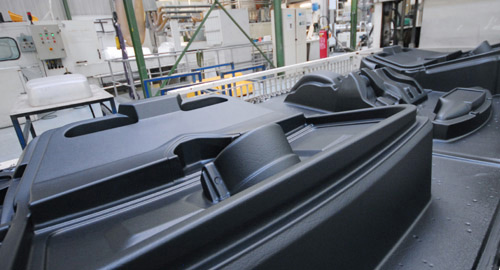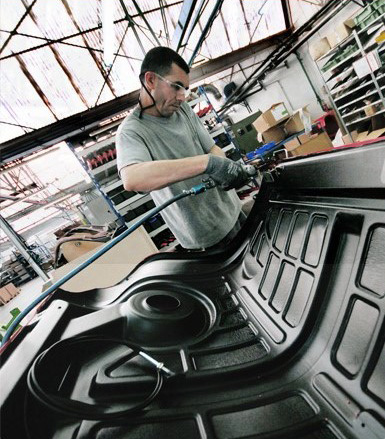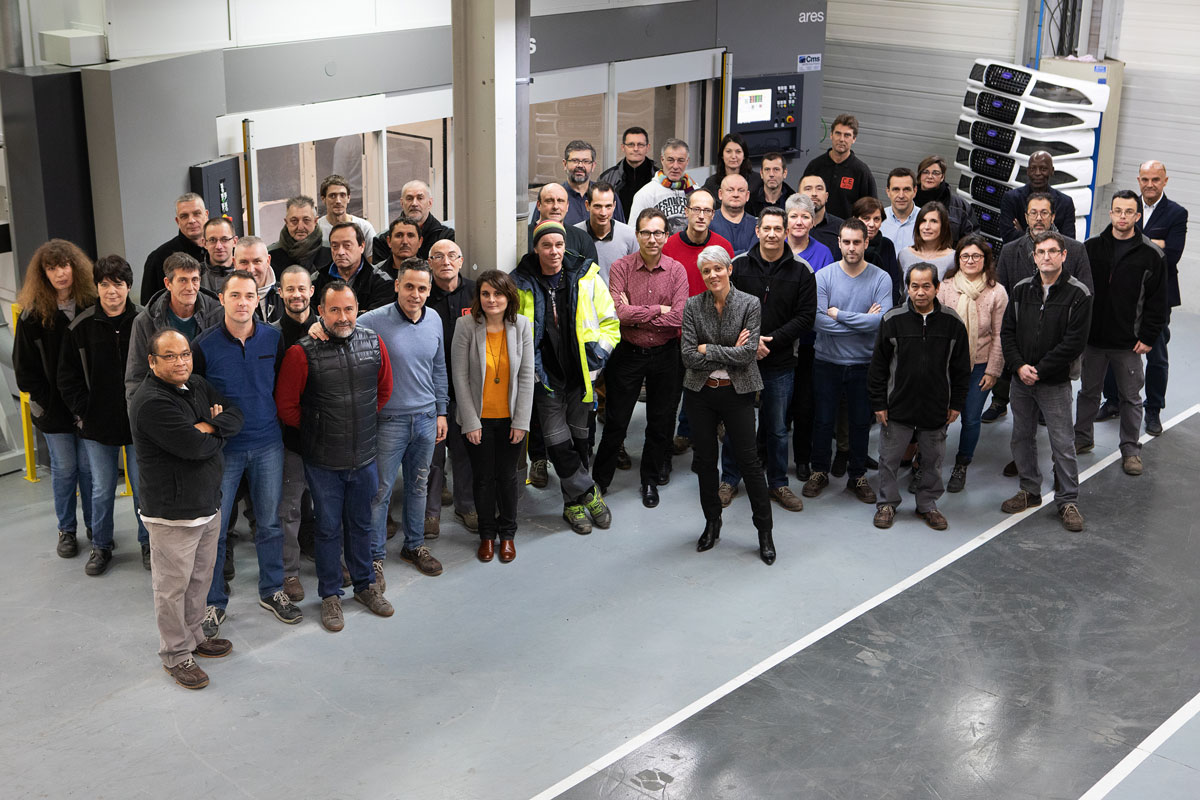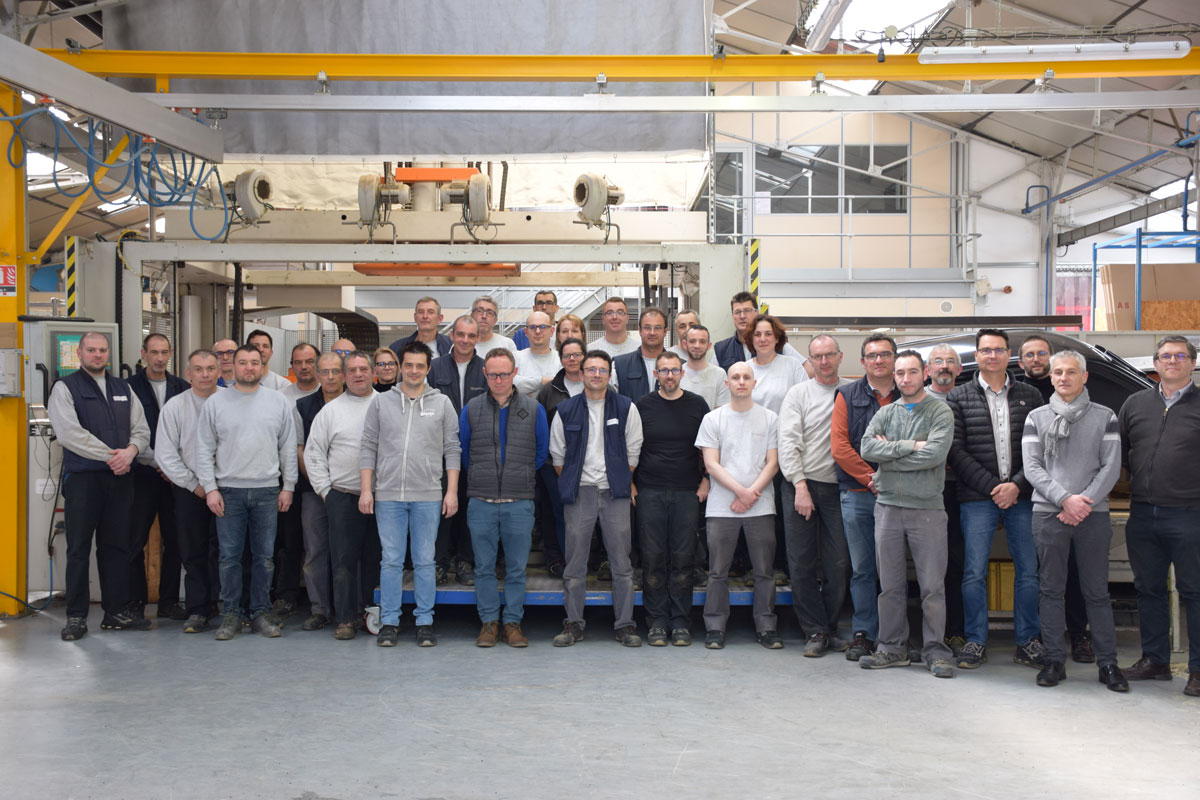Thermoforming specialist
Thermoforming is a technique that involves taking a plate-like material (glass, plastic ...) then heating it to soften it, and to take advantage of this ductility to shape it with a mould. The material hardens when it cools, keeping this form.
Many plastic parts are thermoformed: plastic cups, yoghurt pots, most packaging (blister), etc. Hard cover protection for electronic components, machinery, or even automotive body parts (ex. bumpers). For the thermoforming of thermoplastic we use materials that have a rubbery plate (the difference between the softening temperature and the melting temperature) to a greater or lesser extent. Ideally, this plate should be as broad as possible to provide the best options for thermoforming. It is mainly influenced by the crystallisation rate and the molecular weight (chain length). This is why some thermoplastics are difficult to thermoform, PA, for example.
Continuous Extrusion Thermoforming

Generally, the following materials thermoform well:
- PS: Polystyrene
- HDPE: High Density Polyethylene
- PP: Polypropylene
- PC: Polycarbonate
- ABS: Acrylonitrile Butadiene Styrene
- PVC: Polyvinyl chloride
- PMMA: polymethyl methacrylate
- SB: Shock Polystyrene
- PET: Polyethylene terephthalate
It must be noted that thermosetting materials do not thermoform as they do not have a rubbery plate. Indeed, they become solid through an irreversible crosslinking process.
It is common to use combinations of several polymers in thermoforming (ABS / PMMA, PS-PE, ABS + PMMA film ...). These associations are made during the extrusion of the plates, either by:
- Co-extrusion (different layers of materials): example ABS / PMMA
- Blend (mixture in the die or the interaction of different materials): Example PS-PE
- Lamination (a film of calendering on a combination of extruded material): ABS + Example PMMA Film (glossy colourless imitation wood, brushed aluminium, leather ...)
The advantages of thermoforming

- Inexpensive multi-cavity tooling for the large series
- Possibility of changing the tools to facilitate all the modifications and developments of the product
- A large choice of materials and finishes (mechanical properties, temperature, light, colours, surface aspects...)
- A technology that is suitable for small and large series
- Very suitable for the production of parts in all sizes (from small to very large) - production of parts that have a minimal thickness (films / less than 1 mm) to very thick (greater than 10 mm)
- Very suitable for the production of parts that have complex shapes, cutting, machining, ...
Production of complete features






